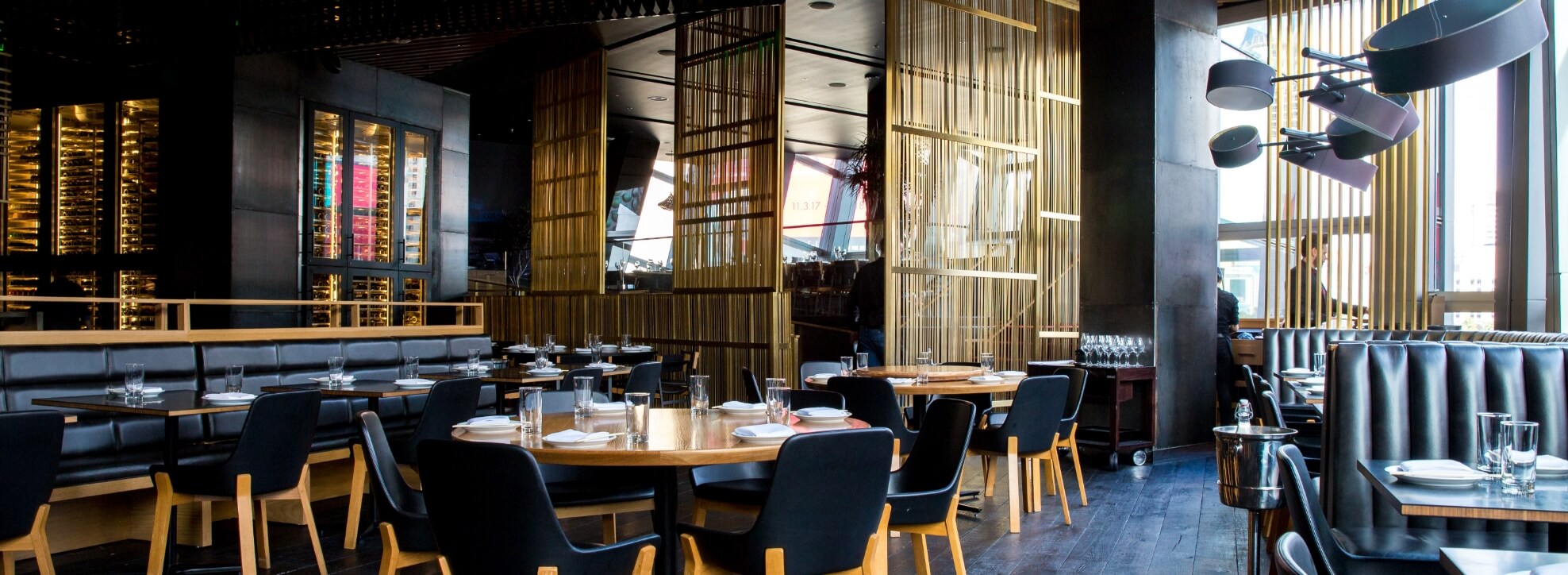
A Guide to Restaurant Servers Training
Table of Contents
Your restaurant can have the most groundbreaking cuisine and amazing restaurant concept in town, plus an amazing marketing program to reach out to new and repeat customers. But those things alone won’t keep customers coming back to your restaurant.
Therefore, your restaurant will also need to deliver top-notch service.
That’s because your restaurant isn’t just selling food — it’s also selling service. Of course, customers come in for a delicious meal, but they also want to feel catered to and appreciated. Your restaurant is selling an experience almost as much as it’s selling a meal.
This kind of great customer service doesn’t happen on its own. If you want to be able to deliver the kind of guest experience that creates loyal restaurant customers, you’ll need to give your restaurant staff trainings and tools they need to succeed.
Here’s how to provide the kind of restaurant training that will win your restaurant long-term customers.
Put Your Restaurant Server Training Procedures and Standards into Writing
There’s nothing quite as effective as writing something down to transform it from a vague idea into a clear reality.
If your plan for your restaurant server training is simply to have them watch or shadow other servers for a while until they “absorb” their skills without making things official, you’re going to run into problems.
Without written server training standards, new employees will start doing things a little bit their own way, and you may find that your culture begins to drift in the wrong direction over time. You can keep things official and professional by adopting official procedures and guidelines.
Here are just a few of the written records you should have to guide your official restaurant server training:
- Official job descriptions
Why not start right at the beginning? Any employee appreciates having a clear understanding of what their responsibilities will be upfront, and this starts at the beginning of the hiring process as you’re looking for job candidates.
Of course, you can’t detail every single responsibility in the job description, but there’s nothing wrong with making expectations as clear as possible as early as possible so you can attract the right kind of applicants.
- Employee handbook
This document is a must-have from a legal standpoint, and it applies to everyone on staff — not just servers. That said, the employee handbook is certainly a crucial part of training a new server hire.
The handbook should detail things like appropriate dress code, time-off policies, and the right way to report bad behavior — all of which directly affect a server’s ability to do their jobs properly.
- Server manual
Beyond the employee handbook, creating a manual specifically for servers is a good way to keep all best practices about delivering the quality service in one place. This manual may include details on how to speak to customers, goals for ticket time, the steps of service for each customer
- Lists of other tasks and duties
Most servers are responsible for at least a few other tasks outside of serving food, such as ringing up bills properly, running the point of sale system, opening the restaurant, closing the restaurant, cleaning or sanitizing work, and occasionally bartending (or at least serving alcohol).
Procedures for these responsibilities can be listed inside the server manual, or they can be in other documents that other employees can access, too.
- Station diagram
A visual diagram of the restaurant can be useful for both servers and hosts. It should show how to seat diners and which servers are responsible for which sections. It may even show routes to and from the kitchen.

Design Orientation and Training Carefully
Restaurant server training can be broken down into three parts: orientation, training, and ongoing training.
When servers are first hired, orientation will take them through the basics, but they’ll need time to practice what they’ve learned in training before they can be fully independent. After that, even long-term employees will still occasionally need to take part in training to stay up-to-date on things like menu changes, new service tactics, and even training on how to treat other people (which may be required by law in your jurisdiction).
Here’s what to know about each step:
Orientation
The main thing to remember for the orientation phase is that servers may not be able to afford to work without tips for long. For that reason, you should plan to pay them extra for this time, or at least to finish this phase quickly so that they can start earning tips. Part of orientation might include learning what restaurant employees in each role do, from the back-of-house staff to the bartenders to the host team.
Server Training
For the actual restaurant server training, you may want to come up with a checklist of things that they’re required to learn and devise ways to make sure they know and understand the material before the training ends.
Here are a few things that you might want to test for during servers’ training:
- How to carry large orders of food and drinks
- The best routes from the kitchen to the tables and back
- How to carry and serve hot food safely
- How to properly pour wine and other beverages
- How to check for proper table setup
- Safety and security training
- Sanitation training
- Menu knowledge, including how each dish is prepared, suggested drink pairings, allergy restrictions for each dish, and how to quickly check on the quality of each dish before it’s served
- How restaurant software works, including the kitchen display system, the point of sale system, as well as any other technology
- How to handle all types of customer payment
- How to suggest complementary items, such as dessert, and when to suggest them during the meal
- How to deal with challenging customers
- Scripts to use throughout the diners’ experience
- How to lock or unlock restaurant doors and handle the security system
Note that the trainer might also need training of their own so that they understand the best ways to help new servers learn all the material. In fact, it’s a good idea to create an official training manual for trainers to use so they can make sure that each important area has been covered and completed during the restaurant server training.

Ongoing Restaurant Server Training
Once initial staff training is completed, servers will still have to train occasionally. Here are just a few of the types of things that even experienced employees will have to continue to learn.
- Menu Tastings
It’s important that servers get a chance to try the dishes on the menu for themselves so that they can be prepared to give diners their own opinions and personal insights into how each dish tastes. (This is particularly important for fine dining restaurants that offer more complex menu items.)
One option to make sure all servers have personally tried the menu is to host official tasting sessions for servers. These tasting sessions can be a special perk for the staff, and a fun way for them to experience all the dishes. These tastings will have to be scheduled regularly so that servers can keep up with the menu as it changes seasonally.
If you don’t have the time or resources to do official tastings, at least give employees food allowances or deep discounts on the menu so they can enjoy the restaurant’s food during their shifts and on breaks.
- Training on Menu Changes and Specials
Servers will also have to keep up to date as the menu changes and on any specials your restaurant is running, and you may want to make sure that all servers have memorized the details of menu changes as a team before they’re rolled out.
- “Good behavior” training
Depending on your state, servers might also have to occasionally learn best practices for avoiding harmful (and potentially litigious) behaviors such as discrimination and harassment — just like employees do in other industries.
You can make the best of these mandatory training sessions and use them as an opportunity to drive home how you expect employees to treat one another at your restaurant. Employees should know how they can report inappropriate behavior, and managers should get some practice in how to respond to those complaints.
This kind of training can contribute to a healthier work environment, which in turn cuts down on the turnover rate and helps you retain the very best employees.
- Standard certifications
Over time, you might want to offer certain servers a chance to pursue official certifications, such as becoming a certified sommelier, or becoming officially certified in safely handling food, serving alcohol, and dealing with foods containing potential allergens.
Be Intentional About Culture
It’s worth noting that all the written records and manuals in the world won’t can’t make your servers actually want to be there and want to do a good job.
Servers are more likely to work hard and provide excellent service if they care about your restaurant’s success and feel like they’re a part of something important.
Servers should feel like they have agency over their work — they should feel like they’re trusted and respected as a part of the team. If they don’t feel that their hard work is appreciated or start feeling disengaged or resentful, there’s little chance that they’ll take any training seriously.
Culture can be notoriously difficult to define, but leaders set the tone by being conscious about the values they want to see their servers exhibit.
It can help to have an official mission and vision statement and list of values for your restaurant — assuming that they’re authentic and actionable and not just boilerplate statements about respect. But leaders must also work to exhibit those values themselves and call out any behavior that doesn’t align with them.
If you’re a manager or owner, consider how servers are paid. Are they truly rewarded for loyalty and excellence? Do they have a path to advance in the future so they’re compelled to say with your restaurant? Those kinds of perks can inspire them to keep delivering the best service and adhering to their training.

Treat Training Manuals as Living Documents
A restaurant server training manual isn’t something you create once and then file away forever.
Keep adapting the training as you assess new needs and challenges that the training hasn’t addressed properly.
Consider scheduling regular meetings to update the training documents. An outdated or ineffective training program may be worse than not training at all, because new hires will get bored and frustrated right away and may disregard training entirely.
Use Tech Tools to Make Training Easier
The right technology can make it much easier for your new restaurant hires to get up to speed.
Using an outdated POS system can be complicated for newly hired servers. Modern programs have user-friendly digital interfaces that are constantly improving in real-time as software developers incorporate new best practices.
The best restaurant POS systems can even take servers through the service process step by step and prompt them to make sure certain tasks are complete at the right times.
At Truffle POS, we’re committed to offering a comprehensive modern point of sale solution that is intuitive for staff to learn and use daily.
We offer a consultative onboarding process, too, so even the least technically inclined restaurant owners will feel comfortable getting their staff trained on the new system.
Click here to learn more about our online ordering features, or request a free 30-minute demo here.





